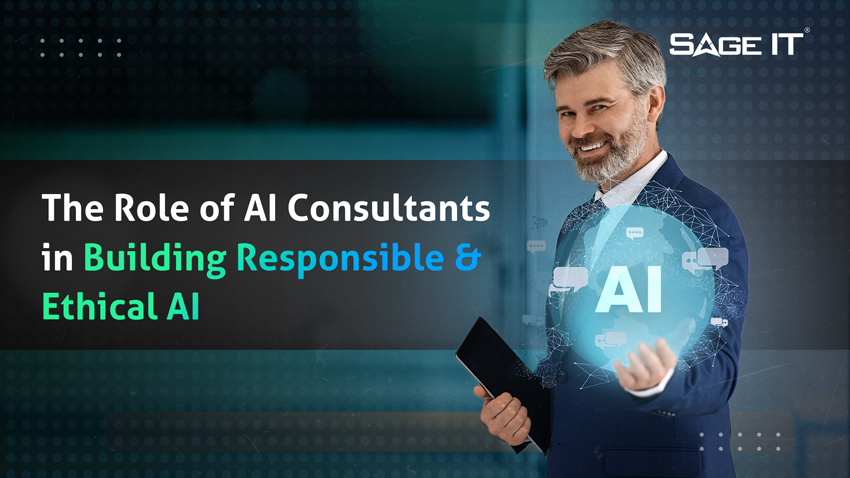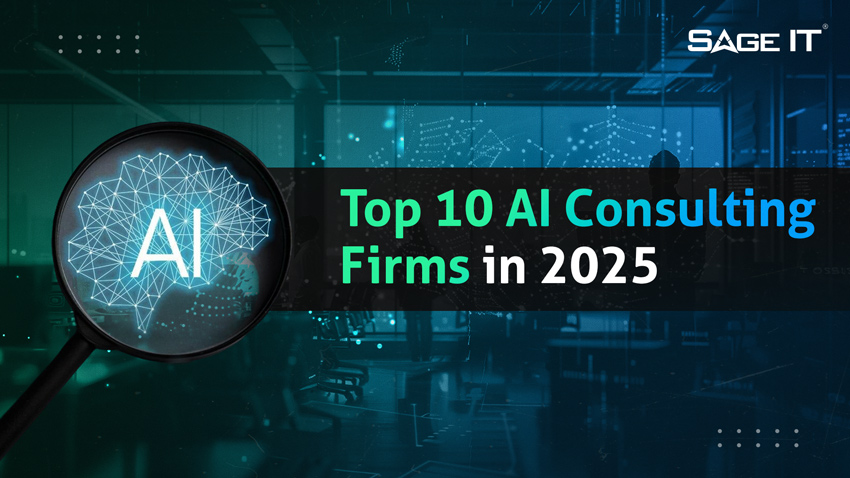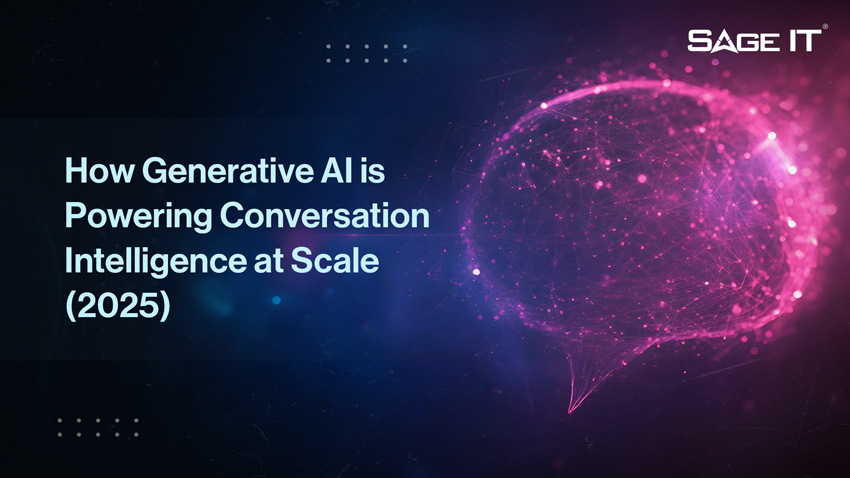Cyberattacks are happening incredibly fast now, often in less than an hour. This leaves security teams with very little time to react. Even with good tools and experienced people, they still miss some threats or take too long to figure out what’s going on.
GenAI is starting to close those blind spots. It helps security teams spot early signals, build richer threat context, and respond faster, without replacing human analysts. Instead, GenAI augments them with real-time insights, pattern recognition, and decisions that align with security policies.
This blog shows how security teams are already using GenAI in the field, from threat detection and phishing defense to playbook-aware response and GRC. You’ll also find guidance on aligning GenAI with your existing stack, security model, and compliance boundaries, without losing control.
Generative AI in Cybersecurity
Traditional AI and SOAR platforms rely on static rules and structured data. In contrast, Generative AI (GenAI) brings contextual reasoning, language understanding, and multi-modal analysis to cybersecurity.
Powered by large language models (LLMs) and transformers, GenAI can summarize complex logs, interpret scripting errors, generate policy drafts, and even suggest next steps during triage, all in natural language.
Unlike fixed workflows, GenAI supports prompt chaining, enabling dynamic responses across logs, alerts, and threat intel. This shift makes security operations faster, more adaptive, and easier to scale.
Enterprise-ready GenAI tools now include private LLM deployments, ensuring data privacy and compliance. As attacks evolve and talent gaps persist, pairing human expertise with GenAI is becoming a cybersecurity imperative.
13 GenAI Use Cases in Cybersecurity
1. AI Security Co-Pilot for Developers
Modern development cycles move fast, but security reviews often lag behind, increasing exposure. GenAI-powered security co-pilots are addressing this by offering real-time code guidance, vulnerability spotting, and contextual suggestions right inside IDEs.
These co-pilots assist with identifying insecure libraries, flagging hardcoded secrets, and proposing secure code snippets, all while reducing manual review burdens.
Unlike static analysis tools, they reason based on context, coding patterns, and past threat intel.
It supports real‑time code and policy enforcement via guardrail APIs integrated into developer workflows
2. Automated Vulnerability Analysis
Security teams often struggle to prioritize thousands of CVEs scattered across containers, APIs, and third-party libraries.
GenAI-based vulnerability pipelines now support contextual triage by analyzing code, software bills of materials (SBOMs), and runtime behavior to surface the risks that truly matter.
By aligning vulnerability insight with runtime context, GenAI allows enterprise teams to reduce patching delays, improve compliance posture, and free up analysts to focus on proactive security planning.
3. Synthetic Threat Scenario Generation
Security teams often struggle to train their systems against rare or emerging attacks, especially when real-world data is limited, sensitive, or unavailable.
That’s where Generative AI helps by creating synthetic threat scenarios: realistic but artificial attack data that simulates zero-day exploits or fast-changing malware.
This allows teams to test how well their systems respond to advanced threats without waiting for real attacks to happen. It’s especially useful when preparing machine learning models or running red team simulations that require diverse, evolving inputs.
By adding these simulated threats into training pipelines or testing environments, organizations improve their detection accuracy, gain better resilience insights, and reduce risk, all before anything hits production. It’s a smart way to prepare for what hasn’t happened yet, but probably will.
4. AI‑Powered Phishing Simulation & Detection
Phishing remains one of the most common, and costly, attack vectors in cybersecurity. Traditional filters often miss cleverly crafted emails that mimic real conversations.
GenAI is changing that by generating realistic, human-like phishing simulations that help teams stress-test their defenses and sharpen their detection models.
Simulated emails with authentic tone, urgency, and personalization help identify vulnerabilities in filters and employee awareness, before an actual breach occurs.
- GenAI generates targeted spear‑phishing messages that mimic internal communications.
- Models analyze the generated emails, explaining why they’re high‑risk, for example, suspicious URL patterns or tone cues.
By integrating GenAI into phishing tests and feedback loops, security teams can better train users, adjust detection rules, and identify blind spots in human and system-level responses, before attackers do.
5. Script, Query, and Regex Assistance
Cybersecurity engineers often lose valuable hours troubleshooting syntax issues, crafting complex queries, or building regex patterns for threat detection.
GenAI significantly shortens this cycle by helping teams generate and debug PowerShell, Bash, Python, SQL, KQL, YAML, and regular expressions in real time.
These assistants can auto-complete placeholder logic, suggest corrections for exploit errors, and create search queries tailored for specific SIEM platforms.
A 2025 study on arXiv compared various methods of regular-expression composition and found LLM-generated regex to be more accurate and interpretable in log anomaly detection tasks compared to traditional techniques
This shows how AI can move beyond code writing into error translation and runtime debugging. When integrated into analyst workflows, GenAI doesn’t replace human input, it accelerates it.
The result: faster investigations, fewer overlooked logs, and better consistency across scripting tasks that used to demand niche expertise.
6. Log & Alert Summarization
Security teams drown in verbose, JSON-heavy alerts. Without quick clarity, the Mean Time to Triage (MTTT) extends, sometimes over 45 minutes, putting critical systems at risk.
GenAI digests sprawling logs and endpoint alerts into concise, plain-language summaries. It not only highlights the root cause but also clarifies ambiguous error messages for faster decision-making.
A pre-production pipeline built by a SOC team showed MTTT dropping from around 45 minutes to under 2 minutes using an LLM-powered triage assistant that analyzed process activity, endpoint status, and alert context .
Designed to plug into existing SIEM or EDR workflows, this GenAI ‘second pair of eyes’ provides analysts with synthesized insights, leaving them more bandwidth to focus on critical and complex investigations.
7. Documentation & Policy Generation
Security teams often spend weeks drafting and updating technical documents, like internal policies, audit reports, SOPs, or compliance mappings. Generative AI changes that. It rapidly generates well-structured documents aligned with security standards like ISO 27001, NIST, and SOC 2.
Kempower, a Finnish EV charging firm, used GenAI to automate their ISO 27001 documentation across 116 controls. This helped them accelerate compliance efforts and reduce manual workload for their IT and audit teams.
GenAI also improves clarity, formatting, and version control, so updates are easier, and documents stay audit-ready. For fast-growing enterprises, this saves time and reduces risk while keeping up with changing regulatory demands.
8. Security Awareness & Communication Refinement
Security leaders often face a disconnect between technical threats and employee understanding. GenAI helps bridge this by writing clear, human-readable internal content, such as phishing response guides, awareness newsletters, and policy updates, tailored to different roles across the company.
It also supports high-stakes communication like board-level reports and onboarding instructions with better structure and tone.
The U.S. The Department of Homeland Security developed DHSChat, a secure internal chatbot powered by a fine-tuned Falcon LLM, to support real-time generation and editing of security awareness content.
The tool assists staff in drafting policy memos, phishing alerts, and executive briefings. Unlike generic models, DHSChat was hosted in a zero-data-leak environment and trained using FISMA and FedRAMP-aligned security language.
As a result, DHS accelerated internal communication workflows while maintaining compliance and minimizing human workload.
By automating and refining communication, organizations can reduce human error, increase policy adoption, and build a more security-aware culture without overburdening teams.
9. Threat Modeling Assistance
Security teams often skip or delay threat modeling due to complexity and time constraints, leaving critical risks unaddressed. As organizations scale up their use of infrastructure as code (IaC), traditional manual methods fall behind, exposing gaps in security modeling.
Generative AI fills this gap by analyzing IaC configurations like Terraform and CloudFormation to surface potential attack vectors and recommend mitigations, much faster than human effort.
- GenAI reads IaC files, system diagrams, and architecture documents
- Applies security frameworks like MITRE STRIDE to identify threats
- Returns a structured threat matrix with classifications and suggested controls
The result: a structured threat matrix with clear classifications and actionable controls. Run a GenAI threat model on your staging IaC setup. Let your security team review the AI-detected risks. Compared to results, most teams report faster modeling and sharper insights than with manual methods.
10. Agentic AI for Alert Triage
Security teams are drowning in alerts, often lacking the time to thoroughly investigate each one. This leads to delayed response and missed threats. By deploying agentic AI, multi-step systems that analyze alerts step-by-step, teams can significantly improve accuracy and intervention speed. These systems can:
- Interpret raw EDR/SIEM alerts
- Correlate them with past incidents using context-aware logic
- Classify threats and escalate valid cases
A L3 SecOps team that piloted an internally hosted LLM-based triage agent. It reduced mean time to triage from ~45 minutes to under 2 minutes and outperformed their vendor’s managed detection service in identifying true positives and false positives.
They emphasized strong guardrails and human review, adopting a “trust-but-verify” model.
This shows that, when constructed thoughtfully and paired with human oversight, agentic AI can enhance SOC efficiency, reduce alert fatigue, and improve detection outcomes, without compromising control or data privacy.
11. Explaining Complex Security Concepts
Generative AI acts as an accessible security tutor. It can break down advanced threats, like malware behavior or MITRE technique mappings, and walk new SOC analysts through JWT token flows, firewall rule implications, or obscure Linux command structures.
Instead of dense logs, analysts get clear, step‑by‑step explanations that mimic an in‑house mentor.
This “ELI5” approach isn’t just for novices, it reduces misinterpretation risk and speeds onboarding.
A recent report highlights how frontline analysts use AI to decode event IDs, clarify PowerShell errors, and understand unfamiliar syscalls, without diving into technical manuals.
This human‑centric clarity improves confidence and accelerates investigation quality across the SOC.
12. Risk Assessment & Compliance Automation
GenAI helps supplant repetitive, manual work by auto-creating risk assessment templates and compliance checklists, from SOC 2 to GDPR. Teams feed in project details, and AI drafts forms ready for audit.
For instance, internal auditing at WestRock used GenAI to draft audit objectives and programs, improving productivity and giving auditors more time for strategic tasks.
GenAI parses context to align content to frameworks like HIPAA or NIST. It generates structured outputs, control mappings, risk scoring, and evidence requests, saving hours compared to manual creation.
The result: consistency, traceability, and faster review-ready documentation, crucial when facing tight reporting timelines or client-facing assessments.
What to measure next: compare documentation hours before vs after AI, track audit error rates, and gather feedback from control owners. These metrics help validate ROI and build analyst trust in AI-augmented compliance.
13. Obfuscated Code & Payload Decoding
Cybersecurity teams routinely face cleverly concealed threats, emoji-based, Base64-encoded, or JS-packed scripts hide malicious intent. GenAI excels at exposing these hidden payloads within seconds.
For example, a recent Threat Intelligence report demonstrated how AI tools decoded Base64-encoded phishing JavaScript from an SVG file to reveal a malicious URL used for credential harvesting.
Analysts have described GenAI-based assistants parsing obfuscated phishing payloads in under 5 seconds, unmasking malware links that would take much longer to uncover manually.
By translating hidden logic into clear, structured summaries, GenAI boosts triage efficiency and reduces blind spots.
It doesn’t just unhide code, it explains what it does. That means faster investigations, better context, and stronger defenses, even when adversaries use advanced obfuscation techniques.
Red Team vs Blue Team – Offensive & Defensive GenAI
| Role | How GenAI Is Used | Risks & Examples | What Security Executives Should Do |
|---|---|---|---|
| Red Team | Craft deepfake audio/video for impersonation
Develop evasive malware using AI-generated code |
Deepfake fraud: TRM Labs reports high-value scams (e.g., AI-voiced CEO impersonation costing millions)
Prompt injection attacks: AI systems manipulated to bypass safeguards |
Adopt advanced detection (voice biometrics, anomaly detection), train staff on verification protocols, and monitor adversarial AI use |
| Blue Team | Auto-triage alerts
Generate reports, summarize logs, enrich threat intel |
Overtrust & Hallucination: AI might miss subtle threats or return fabricated IOCs.
False Confidence: Analysts may skip validation. |
Pair AI with human review (“trust but verify”), build guardrails, track metrics on triage speed and accuracy |
GenAI Cybersecurity Risks – Operational and Systemic Threats
Operational Usage Risks
1. Hallucinated Output in Scripts, Configs & Vendor Commands
When security leaders rely on GenAI to auto-generate scripts or configuration templates, they’re often assuming correctness by default.
But GenAI doesn’t validate, it predicts. This disconnect can lead to silent failures: commands that look right but don’t work, syntaxes that pass linters but violate runtime behavior, or fabricated vendor-specific flags that seem legitimate.
For enterprise teams managing distributed environments, this means risk without visibility. A hallucinated “iptables” rule or cloud policy might not break anything immediately, but it introduces latent vulnerabilities.
Worse, it erodes trust in automation pipelines. If your engineers need to re-check every GenAI-generated config, it defeats the efficiency gains.
Note for Security Executives
Each hallucinated output isn’t merely an error, it creates a false sense of assurance, allowing misconfigurations to slip into production environments unnoticed, gradually weakening your overall security posture without immediate visibility or alerts.
2. Prompt Sensitivity & Misleading Completions
Security teams expect consistency, but GenAI systems don’t always deliver it.
Ask the same question two slightly different ways, and you might get two very different answers, both confident, neither verified.
This fragility is especially dangerous in cybersecurity, where context defines correctness.
When SOC teams use LLMs for triage or junior analysts lean on GenAI for incident summaries, inconsistent completions can subtly reshape priorities, mask misconfigurations, or suggest incorrect remediations, all without raising a flag.
These misleading outputs may sound professional and polished, yet push your team toward unsafe actions.
Note for Security Executives
The model doesn’t “understand” security, it reflects your input back to you, amplified.
Without prompt controls, versioning, and validation, GenAI becomes a risk surface rather than a productivity tool.
3. Misuse in Sensitive Infrastructure (Cloud, Identity, Firewalls)
Enterprise infrastructure demands precision. When GenAI is used to generate IAM policies, firewall rules, or cloud templates, the model is often operating without situational awareness. It doesn’t know your trust boundaries, shared responsibility zones, or compliance obligations.
That’s why we’ve seen outputs suggesting:
- Broad “AllowAll” roles in AWS IAM.
- Open CIDR ranges in production firewalls.
- Over-scoped service identities in Kubernetes.
These aren’t just syntax issues, they’re architectural violations that breach zero-trust models and trigger audit failures. When GenAI is plugged into CI/CD pipelines or DevSecOps tooling without safeguards, it becomes a liability multiplier.
Note for Security Executives
Context-blind code generation in sensitive systems is not innovation, it’s exposure. Without organizational context enforcement, you’re automating risk at scale.
Shadow AI: Teams using ChatGPT/Claude without controls
Unmonitored GenAI use by employees introduces serious blind spots. Without governance, sensitive data can be exposed, and unauthorized prompts may bypass security protocols.
Organisations must implement usage policies and monitoring to prevent the rise of “shadow AI” that quietly undermines enterprise risk posture.
SaaS LLMs vs Private-Hosted Models
Public SaaS LLMs offer convenience but increase data exposure risks. Private-hosted models allow tighter control, ensuring compliance, access governance, and architecture alignment.
Choosing the right deployment model isn’t just about performance, it’s about sovereignty over data, system behavior, and response transparency.
Data Residency, Prompt Logging, and Access Control
Where GenAI processes your data matters. Improper data residency can violate regional laws. Without clear prompt logging and access controls, teams lose audit visibility and expose the org to insider threats.
Security officers must enforce boundaries at the infrastructure and usage layers.
Ethical Design: Transparency, Prompt Boundaries, Audit Trails
AI systems must be explainable, auditable, and traceable. Without ethical scaffolding, like prompt restrictions and output validation, models can be gamed or manipulated.
Security leaders must champion transparency, audit trails, and accountability to meet both regulatory demands and public trust expectations.
Systemic Threats Against GenAI
1. Data Poisoning
Attackers can subtly manipulate training data or fine-tuning sets, embedding toxic or biased information into GenAI outputs.
This undermines trust in generated responses and can silently skew model behavior across multiple teams or tools.
Use secure, audited data pipelines with checksum validations and versioned datasets. Introduce data provenance metadata and restrict upload access.
When using third-party LLMs, validate inputs with integrity checks before integrating outputs.
2. Model Drift
Over time, LLM performance can degrade or diverge due to updates, unseen inputs, or operational context changes.
In cybersecurity, this may result in inconsistent alert handling or incorrect risk scoring.
Track output stability using benchmarked prompts and threat scenarios. Establish periodic “baseline testing” across GenAI agents.
Use observability tooling to monitor degradation signals, especially on triage, classification, or advisory tasks.
3. Prompt Injection
Malicious inputs crafted to hijack GenAI behavior are increasingly common. These attacks bypass guardrails, embed hidden commands, or manipulate model tone and logic.
Adopt layered prompt filters using allow/block lists. Normalize and sanitize inputs with regex patterns, JSON schemas, and NLP-based validation.
For sensitive applications, use prompt templates with locked context rather than raw freeform inputs.
4. Jailbroken LLMs
Unauthorized prompt engineering can bypass embedded restrictions in commercial LLMs, leading to leakage of sensitive data or unsafe recommendations, especially when security teams use public-facing tools.
Deploy private or on-prem LLMs with role-based access controls (RBAC). Use browser isolation and sandboxing for internet-facing AI agents.
Regularly audit prompt histories and use token-level access logging to trace misuse.
How Cybersecurity Professionals Are Actually Using GenAI
What It Is Used For:
Writing Python or PowerShell scripts to automate log parsing or threat hunts.
Analysts generate Python, PowerShell, or Bash scripts using GenAI to automate log parsing, alert tagging, or enrichment.
They iterate in a notebook-like environment, validating outputs in test sandboxes before deployment.
Drafting security documentation or incident retrospectives.
Teams draft post-incident reports, runbooks, or standard operating procedures by feeding event timelines into GenAI.
Output is reviewed by a senior SOC member to ensure accuracy before finalization.
Translating complex IOC handoffs into readable formats for cross-functional teams.
GenAI transforms raw IOC data or EDR alerts into clean handoffs for non-technical teams.
Professionals refine summaries through conversational prompting to match audience literacy (e.g., legal, PR, C-suite).
Explaining JWT flows, registry keys, or MITRE tactics to junior analysts and stakeholders.
Used in training or client reports to break down JWT token misuse, MITRE ATT&CK techniques, or network anomalies.
Teams prompt GenAI in “explain like I’m 5” (ELI5) mode, then edit for internal glossaries or wiki use.
Iterative output validation before production
Professionals test prompts and GenAI suggestions in offline or low-stakes environments (e.g., cloned infra, markdown files).
This controlled loop helps reduce hallucinations and ensures final outputs meet policy and compliance standards.
What It’s Avoided For:
Despite the enthusiasm, professionals clearly avoid GenAI in high-risk zones like:
- Real-time alert response (due to hallucination risks or unclear logic chains).
- IAM policy generation or VPC security configuration (lack of context-awareness).
- SOAR automations without strict human-in-the-loop enforcement.
Getting Started: AI-Augmented Security Roadmap (Step-by-Step)
Step 1: Prioritize Low-Risk, High-Reward Use Cases
Start with tasks that offer quick wins but don’t risk core systems, think alert triage, ticket summarization, or auto-generating compliance reports.
These functions typically sit outside production workflows yet offer measurable ROI by freeing analysts from repetitive labor.
Assign ownership to SOC leads or SecOps managers to drive early outcomes and accountability.
Step 2: Build Secure GenAI Pipelines
Develop internal workflows that meet your organization’s risk tolerance and data governance policies.
This means deploying models in isolated environments, masking sensitive inputs, and avoiding external model calls where data exfiltration is possible.
Treat every LLM interaction as a system integration point, with auditability, access controls, and versioning.
Step 3: Restrict Copilot Permissions
Limit GenAI agent access to specific scopes, read-only for log inspection or annotation-only for EDR triage.
Avoid assigning tasks like rule creation, config changes, or threat blocking unless fully sandboxed and reviewed.
This minimizes operational risk and aligns with the principle of least privilege across all AI-assisted workflows.
Step 4: Operationalize Prompt Libraries with Context Tuning
Build prompt templates that reflect your tooling, naming conventions, and security controls. A well-tuned prompt for Suricata logs or MITRE ATT&CK mappings reduces ambiguity and improves AI accuracy.
Centralize these libraries within your security engineering function to promote consistency and scale across projects and teams.
Step 5: Define KPIs to Measure Impact
Track performance using clear metrics:
- Mean Time to Triage (MTTT)
- False Positive Reduction
- Time Saved per Analyst per Week
Use these to refine AI usage based on real outcomes, not assumptions. Tie them back to SOC capacity, cost savings, or incident response speed for executive-level visibility.
Many organizations accelerate this roadmap by engaging GenAI consulting partners, not for tools, but to co-design implementation blueprints, assess organizational readiness, and tailor AI adoption to enterprise-specific guardrails, risk thresholds, and operational maturity.
Future Trends in GenAI Security
AI Red Teaming & Adversarial Stress Testing
Security teams are shifting from static controls to AI-aware adversarial testing, simulating jailbreak attempts, poisoning prompts, and evaluating how GenAI agents behave under cognitive and contextual manipulation.
These “AI red teams” audit how systems might hallucinate, disclose, or act under ambiguous or hostile conditions. This will soon be a core part of MLOps and SOC readiness audits.
Geo-Risk and Narrative Risk Modeling
With GenAI capable of crafting synthetic narratives and influencing perception, geopolitical threat modeling must now include AI-shaped misinformation risks.
Enterprises will need tooling that analyzes how language models might amplify or de-escalate tensions based on region-specific queries, especially in regulated or politically sensitive industries like finance, energy, and healthcare.
Anti-Deepfake & Content Authentication Layers
Expect a growing stack of LLM-auditable watermarking, digital signatures, and content lineage tracking.
The goal is simple: identify whether a document, video, or advisory was AI-generated, tampered with, or maliciously synthesized. Deepfake forensics will soon be bundled with enterprise DLP and identity verification systems.
Compliance Bots & AI-Native GRC
GenAI is accelerating the move toward automated compliance interpretation, where copilots can parse regulatory frameworks (e.g., GDPR, HIPAA, PCI-DSS) and guide teams on policy adherence in real time.
This reduces audit prep time and helps CISOs maintain an always-compliant state across multi-region deployments.
Autonomous Threat Response Frameworks
The future isn’t just detection, it’s autonomous action within controlled limits. Think GenAI copilots that correlate indicators, assess severity, and initiate tiered responses like isolating compromised endpoints or notifying legal teams.
These systems will be trained with historical response playbooks and governance policies, not just rulesets.
How GenAI Copilots Keep Your SOC Sharp?
Security teams are under pressure to do more, faster. Tier 1 analysts often get buried in alert triage, repetitive tickets, and handoffs. This slows down response and increases burnout.
GenAI changes that. Copilots can auto-draft triage notes, flag likely threats, summarize timelines, and suggest early containment steps. Instead of just automating tasks, they help analysts think and act faster, with fewer clicks.
The result? Burnout drops. Response time improves. And knowledge stays inside the SOC, even when humans rotate out.
Looking to deploy copilots without compromising trust boundaries or compliance workflows? Explore our generative ai consulting services for businesses to evaluate the right-fit security use cases, define safe rollout phases, and build your AI-augmented SOC strategy.
































